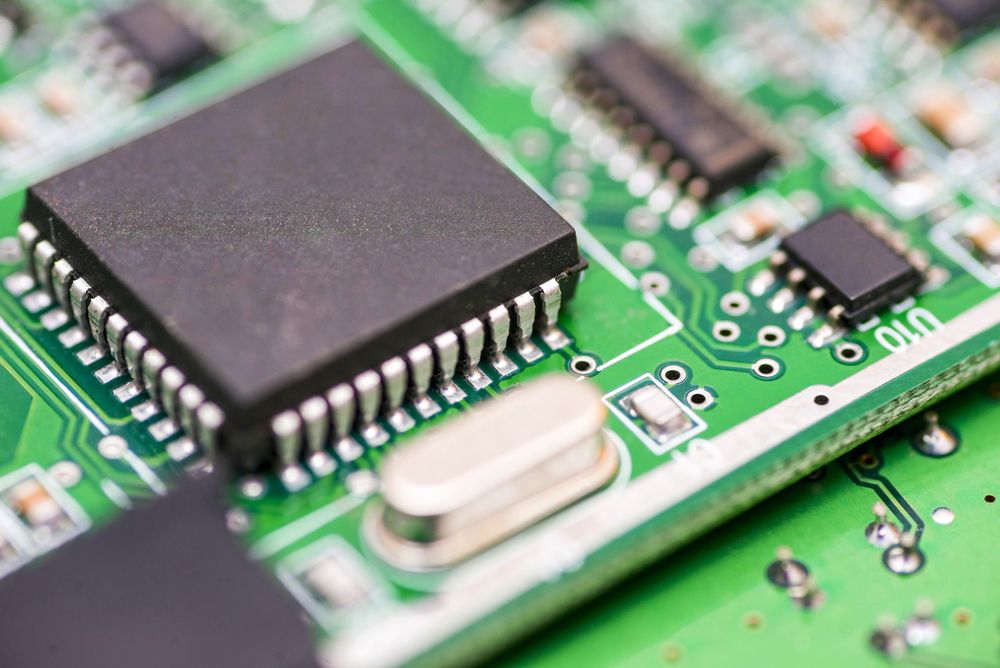
What are the most commonly used chips in embedded development?
Global electronic component supplier AMPHEO PTY LTD: Rich inventory for one-stop shopping. Inquire easily, and receive fast, customized solutions and quotes.
In embedded development, the choice of chips depends on the application's requirements, such as processing power, power consumption, cost, and peripherals. Below is a list of the most commonly used chips and microcontrollers in embedded systems, categorized by their architecture and popularity:

1. 8-bit Microcontrollers
-
PIC Microcontrollers (Microchip):
-
Examples: PIC16, PIC18.
-
Features: Low cost, simple architecture, widely used in hobbyist projects and industrial control.
-
Use Cases: Small-scale automation, sensors, and basic control systems.
-
-
AVR Microcontrollers (Microchip/Atmel):
-
Examples: ATmega328 (used in Arduino Uno), ATtiny series.
-
Features: Easy to program, good community support, and low power consumption.
-
Use Cases: Hobbyist projects, IoT devices, and educational tools.
-
-
8051-based Microcontrollers:
-
Examples: Intel 8051, NXP P89V51RD2.
-
Features: Legacy architecture, simple instruction set, and low cost.
-
Use Cases: Legacy systems, industrial control, and automotive applications.
-
2. 16-bit Microcontrollers
-
-
Features: Ultra-low power consumption, ideal for battery-powered devices.
-
Use Cases: Wearables, medical devices, and energy-efficient IoT applications.
-
-
PIC24 (Microchip):
-
Features: Higher performance than 8-bit PICs, good for mid-range applications.
-
Use Cases: Motor control, industrial automation, and consumer electronics.
-
3. 32-bit Microcontrollers
-
ARM Cortex-M Series:
-
Cortex-M0/M0+: Low power, cost-effective (e.g., STM32F0, NXP LPC800).
-
Cortex-M3/M4: Balanced performance and features (e.g., STM32F1/F4, NXP LPC1700).
-
Cortex-M7: High performance for complex tasks (e.g., STM32F7, NXP i.MX RT).
-
Features: Scalable performance, rich peripherals, and extensive ecosystem.
-
Use Cases: IoT, robotics, automotive, and industrial automation.
-
-
ESP32 (Espressif Systems):
-
Features: Dual-core, Wi-Fi, Bluetooth, and low power consumption.
-
Use Cases: IoT devices, smart home systems, and wireless communication.
-
-
STM32 (STMicroelectronics):
-
Features: Wide range of options, excellent documentation, and community support.
-
Use Cases: General-purpose embedded systems, motor control, and IoT.
-
-
Renesas RX Series:
-
Features: High performance, real-time capabilities, and industrial-grade reliability.
-
Use Cases: Automotive, industrial automation, and consumer electronics.
-
4. Application Processors (Linux-Capable)
-
ARM Cortex-A Series:
-
Examples: Raspberry Pi (Broadcom BCM283x), BeagleBone (TI AM335x).
-
Features: High performance, capable of running Linux or other OSes.
-
Use Cases: Multimedia, networking, and complex IoT gateways.
-
-
NXP i.MX Series:
-
Features: High-performance ARM Cortex-A cores, industrial-grade.
-
Use Cases: Automotive infotainment, industrial HMI, and embedded Linux systems.
-
-
Allwinner and Rockchip SoCs:
-
Features: Low-cost, Linux-capable, and widely used in single-board computers.
-
Use Cases: Media players, embedded Linux projects, and IoT gateways.
-
5. Specialized Chips
-
FPGAs (Field-Programmable Gate Arrays):
-
Examples: Xilinx Spartan/Artix, Intel (Altera) Cyclone.
-
Features: Reconfigurable hardware, ideal for custom logic and high-speed processing.
-
Use Cases: Signal processing, prototyping, and high-performance computing.
-
-
DSPs (Digital Signal Processors):
-
Examples: TI C2000, Analog Devices SHARC.
-
Features: Optimized for signal processing tasks.
-
Use Cases: Audio processing, motor control, and telecommunications.
-
-
Wireless Microcontrollers:
-
Examples: Nordic nRF52 (Bluetooth), ESP8266/ESP32 (Wi-Fi), LoRa modules.
-
Features: Integrated wireless communication.
-
Use Cases: IoT, wearables, and smart home devices.
-
6. Legacy and Niche Chips
-
Zilog Z80:
-
Features: Legacy 8-bit architecture.
-
Use Cases: Retro computing and legacy systems.
-
-
RISC-V Based Chips:
-
Examples: SiFive FE310, Kendryte K210.
-
Features: Open-source instruction set architecture, growing ecosystem.
-
Use Cases: Custom embedded systems, IoT, and educational projects.
-
Summary Table
| Category | Examples | Key Features | Use Cases |
|---|---|---|---|
| 8-bit MCUs | PIC16, ATmega328, 8051 | Low cost, simple, low power | Hobbyist projects, basic control |
| 16-bit MCUs | MSP430, PIC24 | Low power, mid-range performance | Wearables, industrial control |
| 32-bit MCUs | ARM Cortex-M, STM32, ESP32 | High performance, rich peripherals | IoT, robotics, automotive |
| Application SoCs | Raspberry Pi, NXP i.MX | Linux-capable, high performance | Multimedia, networking, gateways |
| Specialized | FPGAs, DSPs, Wireless MCUs | Custom logic, signal processing, wireless | Signal processing, IoT, wearables |
| Legacy/Niche | Z80, RISC-V | Retro, open-source | Legacy systems, custom designs |
Conclusion
The most commonly used chips in embedded development depend on the application's complexity, performance needs, and budget. ARM Cortex-M microcontrollers dominate the 32-bit space due to their versatility, while 8-bit MCUs like AVR and PIC remain popular for simpler tasks. For advanced applications, Linux-capable SoCs and specialized chips like FPGAs or DSPs are often chosen. Always consider factors like power consumption, peripherals, and ecosystem support when selecting a chip.
Related Articles
- ·What are the advantages and disadvantages of using SoCs in embedded systems?
- ·Comparison of ARM vs. RISC-V MCUs
- ·How to determine the performance limit of a microcontroller?
- ·The Application of Embedded Electronics in the Field of Consumer Electronics
- ·Application of Embedded Systems in Industrial Robots
- ·The application of embedded systems in the field of automotive electronics
- ·Comparison of FPGA, CPLD, PLC, Microprocessor, Microcontroller & DSP
- ·How many types of 32-bit MCUs are there? How to choose?
- ·The different between 8-bit, 16-bit, and 32-bit Microcontrollers
- ·Inventory of commonly used automotive MCU chip manufacturers and models
